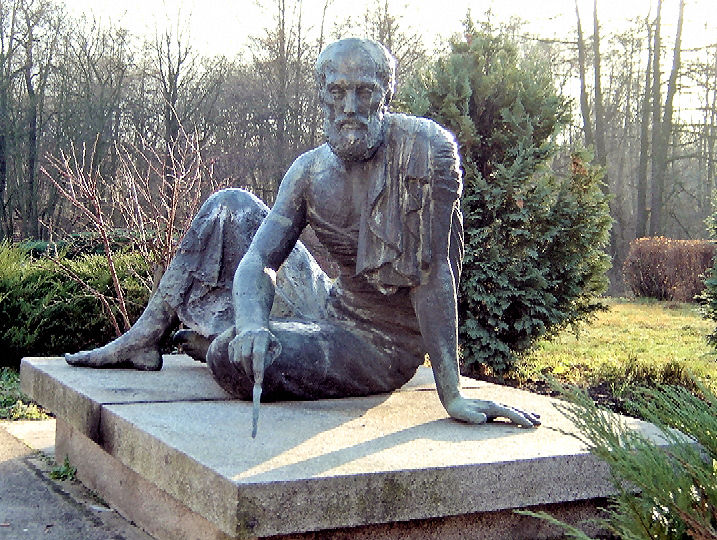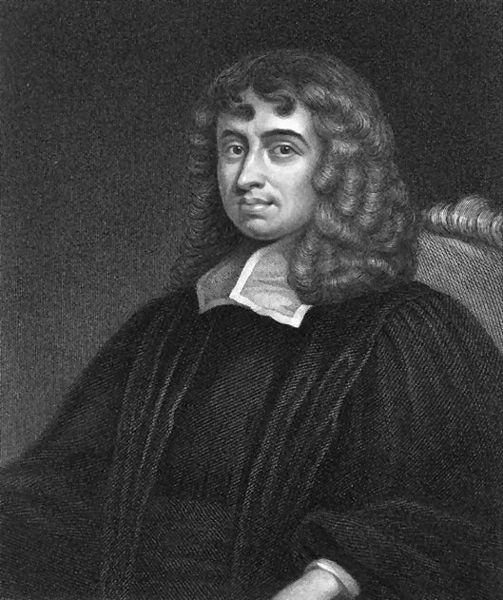Archimedes

Bronze Statue of Archimedes in Berlin, Germany. Sculpted by Gerhard Thieme in 1972.
method of exhaustion, which, in the case of plane areas, the method of inscribed and circumscribed polygons with an increasing number of edges (Rosenthal, 1951, p. 75). In all of his work with these inscribed polygons and finding areas and volumes via the method of exhaustion, Archimedes never approached the idea of a limit (haha. Get it?).
Valerio
The Italian mathematician Luca Valerio used a similar method in the 1600's to show via a formal proof that the area under certain curves can be approximated by sums of inscribed rectangles, whose widths can be made arbitrarily small. The definitive concept of a limit was still lacking in Valerio's work, but mathematicians were getting closer to the Calculus that we know today.
Descartes and Fermat
It should be noted that during the early 17th century, Descartes was working on finding tangents or normals of algebraic curves and Fermat proved and published a method for finding the maximum or minimum of an expression (Rosenthal, 1951, p. 78). Although Fermat's method was limited to polynomials, both used proofs that look similar to what we know as the limit definition of a derivative. Fermat also did extremely important work in the theory of integration.
He was the first who, by 1636 or earlier, had found and proved the power formula of integration for positive integral exponents n, i.e. a geometrical statement equivalent to the formula which we now write as integral
(Rosenthal, 1951, pp. 80-81).
Cavalieri
indivisibles. That is, if a moving point can be considered to sketch a curve, then Cavalieri viewed the curve as the sum of its points. By this notion, each curve is made up of an infinite number of points, or indivisibles. Likewise, the indivisibles that composed an area were an infinite number of lines. Though Cavalieri was not the first person to consider geometric figures in terms of the infinitesimal (Kepler had done so before him), he was the first to use such a notion in the computation of areas (Ginsburg, et. al., 1997, p. 2)
There were a few key elements that were still missing: No one had formally introduced the concept of a limit and verified its importance (although many mathematicians had skirted the issue in a number of proofs), no connection had been made between the derivative and the integral as inverse operations (two ideas that arguably form the basis of calculus), and no one had yet established systematic and formal rules regarding the computation of derivatives and integrals.
John Wallis
In 1656 John Wallis stressed the notion of the limit in his book
Aritmetica infinitorum and stated the general power formula of integration for any real exponent, taking the proof one step further than Fermat and Torricelli. This notion was used and considered by other mathematicians such as Pietro Mengoli and Luca Valerio. Valerio used limits to further his work with area under curves using the limits of sums of rectangles. A Scottish mathematician James Gregory also did work with integration around this time, proving and publishing generalized methods for the area bounded by trigonometric functions, some of them extremely advanced and difficult proofs. Integration was no longer limited to polynomial and algebraic expressions. (Rosenthal, 1951, 82)
Issac Barrow (and what did Newton and Leibniz even do?)

The
first who made this important discovery in full generality was
Issac Barrow ,
the teacher of Newton at Cambridge University... What more remained to be done? The answer is: What had to be created was just the
Calculus, a general symbolic and systematic method method of analytic operations, to be performed by strictly formal rules,
independent of the geometric meaning. Now it is just this Calculus which was established by Newton and Leibniz, independent of
each other and using different types of symbolism. Newton's first discoveries were made about ten years before those of Leibniz;
on the other hand, Leibniz' publications preceded those of Newton, and- what is more important- Leibniz' symbolism, the same as
that used by all mathematicians at present, is superior to that of Newton.
(Rosenthal, 1951, p. 84) Most do not realize that it was in fact Newton's instructor at Cambridge
who provided a large chunk of the foundation that Newton built upon. The discovery that derivatives and integrals were inverse
operations was a huge step towards the development of calculus. One indication of Newton's knowledge and use of
Barrow's fully matured ideas is his verification of Barrow's early possession of a method of tangents. In a speech he prepared for
delivery before the Royal Society on 14 February 171 1/12, Newton stated: Dr Barrow & Mr Gregory drew tangents
by the differential method beforethe year 1669. I applied it to abstracted aequations before that year & thereby made it general.
(Feingold, 1993, pp.316-317).
Newton freely admitted that he generalized and expounded upon the work of his teacher. It is arguable that Barrow should be
given at least the same, if not more, credit for the discovery of calculus as Newton himself. So Newton and Leibniz contributed
most of what we know as calculus today- all of the notation, the definitions, and most definitely the vital connection
between derivation and integration came from their work-- but we owe all of the other mathematicians who provided the vast
background for Newton and Leibniz's work. Most people know that Newton and Leibniz discovered calculus
independently, Leibniz from studying graphs and tangents and Newton studying objects in motion and instantaneous velocity.
But perhaps when we talk about who discovered calculus, there are many other names that are worthy of mention. Without these
other mathematicians, Newton and Leibniz would probably never have had the opportunity to take the work of others to new levels.